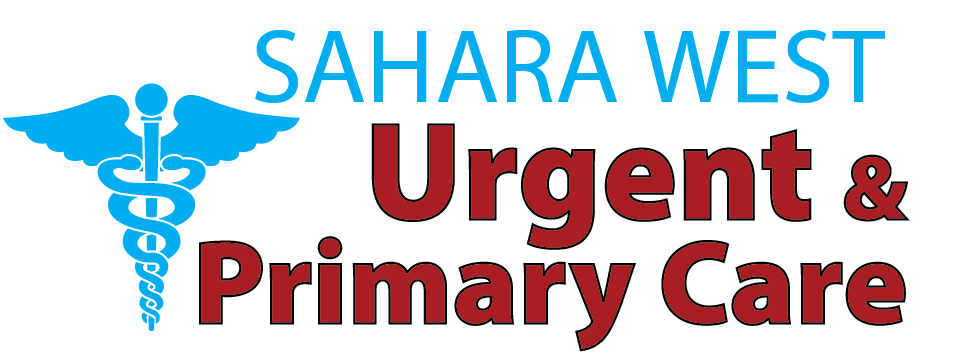Sprains and strains are two of the most common injuries involving muscles and ligaments. Sprain is either an extension or disintegration of ligaments, which are strong connective tissues offering stability to parts of the joints. Strains, however, are connected with tensing of muscles or tendons, overstraining of which is involved, or their tearing. Both of the injuries are painful, swollen,and bruised, and limit mobility, but recognizing the distinction between them helps locate the necessary care. Sprain commonly affects most parts of the body, including the ankle, wrist, and knees, whereas the most strained parts of the body include the muscles of the legs, arms, and back.
Common Causes and Symptoms of Sprains and Strains
The most common instances of these injuries are as a result of the abrupt movement, like twisting, falling, or over-exertion. As an illustration, sprains and strains may occur due to twisting the ankle ungracefully when sports are played or when lifting heavy items in the wrong manner. The following are symptoms that need to be observed: pain at the point of injury, swelling, bruising, stiffness, and shakiness of the affected part. In rare cases, a popping or snapping sensation can be experienced when the injury occurs, which in most instances causes damage to ligaments.
Initial Self-Care Steps for Sprains and Strains
Damage and discomfort can be minimized when the self-treatment is chosen on the spot in case of a suspected strain or sprain. R.I.C.E. method (Rest, Ice, Compression, and Elevation) is one of the most recommended methods that lowers the swelling and contributes to the protection of the torn site. Relax by avoiding putting weight on the injured joints or muscles, application of ice packs in clothes for 15-20 minutes at intervals, use of compressions with elastic bandages, and elevation of the injured parts above the level of the heart to minimize swelling of joints. Ibuprofen can also be used as an over-the-counter medication to take care of pain and inflammation.
When to Seek Medical Attention for Sprains and Strains
As light sprains and strains tend to get better with at-home treatment, one should understand situations when a patient needs professional care. Emergency treatment should be sought with severe pain that does not go away with rest, inability to move or place weight on the injured part, severe swelling, numbness, or open deformity of the limb. In the case of high-impact injuries, like a loud pop as you are injured, even the emergency room may be necessary, better to exclude fractures or traumatic ligament tears requiring operative separation.
Differences Between Sprains and Strains
Whereas symptoms of strains and sprains may appear similar, they affect various tissues and do not have the same treatment. Sprains are related to joints and the connective tissues surrounding the joints, whose injury can result in orthopedic instability in joints, whereas strains are related to muscle or tendon problems and a condition that defines loss of muscle strength and flexibility. The exact type of the injury is of the essence as the ligament injury might not require surgery in this case, but only a cast, and the muscle strain is likely to resolve when left with physical therapy.
Urgent Care for Sprains and Strains: What to Expect
The non-life-threatening sprains and strains that require immediate assessment should be visited at the urgent care centers. Such clinics are able to conduct physical examinations, refer patients to X-rays to rule out broken bones, and offer these types of services as splinting or bracing, to manage the injury. Pain relief in any form is also provided, either using prescription or over-the-counter medications. Waiting times in urgent care centers are normally shorter than those in emergency centers, which means it is an appropriate place to go in case of moderately injured sprains and strains, neither acute nor close to home.
Emergency Room vs. Urgent Care: Which Is Right for Your Injury?
Whether one needs urgent care or an emergency room depends on the extent of the injury. The emergency rooms are set up to treat severe traumas, an injury that the doctor suspects may have involved a broken bone, or an injury that needs surgery or complex imaging such as MRIs. In case you are unable to move the joint or you experience severe deficiency, extreme pain, and/or evidence of infection (redness, fever), the ER is the right choice. On the other hand, urgent care is more effective when dealing with those injuries that involve moderate pain, slight swelling, and lack of deformity, as the treatment process is quick and does not have a price tag more expensive than visiting an ER, combined with the long wait times.
How Urgent Care Treats a Sprained Ankle or Wrist
In urgent care, medical staff use a primary physical assessment and can investigate with the aid of imaging or X-rays to rule out a broken bone. In most cases, treatment can consist of immobilization (the use of braces or splints), teaching of the R.I.C.E. method, and the prescription of analgesic or anti-inflammatory drugs. They will also advise on what activities to avoid and the signs that agents should be aware of, and take them to the doctor. Rehabilitation may be suggested to be done through follow-up care by a primary care physician or a specialist.
When to Visit a Primary Care Doctor for Sprains or Strains
Primary care physician visits are of importance when your symptoms beyond a few weeks or after receiving treatment in urgent care clinics in Las Vegas continue to worsen. Physicians may evaluate nerve damage that is chronic in the ligaments, or muscle weakness and joint instabilities, and can refer you to physical/orthopedic specialists. In primary care visitation, one is also able to monitor the recovery and manage other complications, such as stiffness or repetitive injuries.
Diagnostic Tests Used for Sprains and Strains
Sprain or strain injuries are normally investigated by X-ray in a bid to rule out the possibility of fractures. Nevertheless, the damage to the ligaments or muscle cannot be detected in X-rays and, in complicated or non-healing conditions, the MRI or ultrasound scans may be required. These are more sophisticated tests that are used to assist in gauging injuries on soft tissues to help in the development of more specific treatment plans in case operations or lots of therapy may come in later.
Treatment Options Beyond Urgent Care
In addition to immediate care, there are treatments for sprains and strains depending on the degree of injury. Both mild injuries can be cured by rest and physical therapy. Grade II to III sprains may need to be immobilized using casts or splints and need to be physically rehabilitated to get their strength and bendability back. Surgical treatment may be required in rare circumstances to address a tear in a ligament or tendon, particularly in the event that a conservative treatment is ineffective or the injury is resulting in instabilities with the joint.
Recovery Time and Physical Therapy for Sprains and Strains
The time required to make a recovery is based on the severity of the injury and whether one follows up on their treatment or not. Light sprains normally take 1 to 3 weeks, whereas medium or severe strains can take 6 to 12 weeks and even more. Physical therapy is important in rehabilitation since it strengthens the muscles, stabilizes the joints, and increases flexibility, such that there is less chance of re-injury. Therapists make up programs with exercises that are used to regain functions progressively.
Preventing Future Sprains and Strains
To prevent sprain and strain, prevention is change. ANTIDEFENT exercises involve optimal stretches, the inclusion of warm-ups before the physical exercise, strengthened muscles that hold any vulnerable joint, and good flexibility. Using the right kind of shoes with ankle protection and walking on smooth surfaces eliminates the chances of injury. Body mechanics and lifting procedures awareness also aids in avoiding muscle strains in daily activities or exercises.
Costs and Insurance Coverage for Urgent Care vs ER
Compared to emergency care, urgent care usually costs a fraction of an emergency room visit and is frequently covered under a health insurance plan that has a smaller copay. Emergency rooms are appropriate in serious cases but attract high costs, long delays, and the risk of surprise bills. Knowing about your insurance plan and learning to go to urgent care instead of the ER whenever possible can help save money without the loss of quality care.
Conclusion
Being aware of where to go when you have sprains and strains, so that whether you get self-care, urgent care, or emergency rooms, you are assured of getting proper treatment and being healed swiftly. Major injuries can easily be treated at home, and with urgent care and major injuries must be treated in an emergency. You should constantly note your symptoms and obtain help when you feel an increase in pain or decreased mobility. Take care of your health first and foremost, and act fast after getting medical advice and returning to your feet safely.
When you or a loved one has a sprain or strain, do not leave it untreated and lean on an urgent care centre and ask your doctor to provide instant care when it is needed the most. To schedule your appointment with the highest standard of care and visit Sahara West Urgent Care, visit our website.
FAQs
Can urgent care treat a sprained ankle?
Yes, urgent care centers commonly treat sprained ankles. They provide diagnostic imaging, pain management, and stabilization to promote healing.
When should I go to the emergency room for a sprained ankle?
Visit the ER if you experience severe pain, visible deformity, inability to move or bear weight, or if the injury resulted from high-impact trauma.
Do I need to see a doctor for a mild sprain?
Mild sprains often heal with home care. However, if pain and swelling persist beyond a few days or worsen, seek medical advice.
How long does it take to recover from a strain?
Recovery can range from a few days for mild strains to several weeks for severe injuries, depending on treatment and rest.
Does urgent care treat muscle strains?
Yes, urgent care can evaluate and treat muscle strains, offering pain relief and guidance on recovery.





